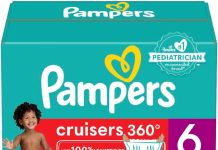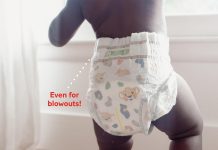In today’s article, we’re going to share some helpful tips on keeping your changing pads clean and sanitized. We all know that changing pads can get messy and harbor germs, so it’s important to have a proper cleaning routine in place. Whether you’re a new parent or a seasoned pro, we’ve got you covered with easy-to-follow steps that will ensure a sanitary environment for your little one. So, let’s dive right into the world of changing pad hygiene!
Review contents
Choosing the Right Changing Pad
When it comes to choosing the right changing pad for your little one, there are a few factors to consider. One of the most important factors is the material and design of the pad. You want to ensure that the pad is comfortable for your baby to lie on and easy to clean.
Material and Design
Changing pads come in a variety of materials and designs. Some popular options include vinyl, foam, and contoured pads. Vinyl pads are often water resistant and easy to wipe clean, while foam pads are comfortable but may require more thorough cleaning. Contoured pads are shaped to provide additional support for your baby and can make diaper changes easier.
Consider the needs and preferences of your baby and yourself when choosing the material and design of the changing pad. Think about whether you prefer a waterproof or non-waterproof pad, as this will also impact your cleaning routine.
Waterproof vs Non-Waterproof
Waterproof changing pads are a popular choice for many parents as they offer easy cleanup and prevent liquids from seeping into the pad. These pads are often made with materials such as vinyl or have a waterproof lining. Non-waterproof pads, on the other hand, may be made with fabric or foam that requires more care during cleaning.
Before making a decision, think about your cleaning preferences and the level of convenience you’re looking for. Waterproof pads are generally easier to clean and maintain, but non-waterproof pads may offer a more comfortable surface for your baby to lie on.
Regular Cleaning Methods
Regular cleaning is essential to keep your changing pad in a hygienic condition. By incorporating regular cleaning into your routine, you can remove surface debris, maintain cleanliness, and prevent the buildup of bacteria.
Removing Surface Debris
The first step in regular cleaning is to remove any surface debris from the changing pad. This can include diaper cream, baby powder, or any other loose particles. You can simply use a clean cloth or paper towel to wipe away any debris on the surface of the pad.
Wiping with Soap and Water
After removing the surface debris, it’s important to wipe down the changing pad with soap and water. This will help to remove any remaining dirt or residue. To do this, mix a small amount of gentle soap with warm water and dip a clean cloth or sponge into the soapy mixture. Gently scrub the pad, paying extra attention to any stained or soiled areas.
Using Disinfectant Wipes
In addition to cleaning with soap and water, you may choose to use disinfectant wipes to further sanitize the changing pad. Disinfectant wipes contain chemicals that can effectively kill bacteria and viruses. Be sure to read the instructions on the wipes and follow them carefully. Wipe down the entire surface of the pad, focusing on areas that come into direct contact with your baby.
Deep Cleaning Methods
While regular cleaning is important, occasionally you’ll need to deep clean your changing pad to remove embedded stains, odors, or bacteria. Deep cleaning methods can vary depending on the material and design of your pad.
Machine Washable Changing Pads
If your changing pad is machine washable, then deep cleaning becomes a breeze. Simply follow the manufacturer’s instructions and toss the pad into the washing machine. Use a gentle cycle and mild detergent to avoid damaging the pad. Once the cycle is complete, allow the pad to air dry or tumble dry on low heat. Be sure to inspect the pad for any damage before reusing.
Hand Washing Changing Pads
For changing pads that are not machine washable, hand washing is the best method for deep cleaning. Fill a basin or sink with warm water and mild detergent. Gently agitate the water to create suds. Immerse the pad in the water, and use a soft brush or cloth to scrub away stains or dirt. Rinse the pad thoroughly with clean water, ensuring all detergent is removed. Squeeze out excess water, and lay the pad flat to air dry.
Natural and Homemade Cleaning Solutions
If you prefer to use natural or homemade cleaning solutions, there are several options that can be effective for cleaning and sanitizing changing pads.
Vinegar and Water Solution
Vinegar is a natural cleaning agent that can help remove stains and odor from changing pads. Mix equal parts of white vinegar and water in a spray bottle. Spray the solution onto the pad and wipe clean with a cloth or sponge. The vinegar smell will dissipate as the pad dries.
Baking Soda Paste
Baking soda is another natural ingredient that can help remove odors and stains from changing pads. Mix baking soda with enough water to form a paste. Apply the paste to the stained or soiled area of the pad and gently scrub with a soft brush or cloth. Rinse the pad thoroughly to remove any residue.
Lemon Juice and Water Solution
Lemon juice is not only a natural disinfectant but also leaves a fresh scent. Mix equal parts lemon juice and water in a spray bottle. Spray the solution onto the pad, allowing it to sit for a few minutes. Wipe clean with a cloth or sponge and rinse thoroughly.
Sanitizing Changing Pads
Sanitizing your changing pad is important to ensure a hygienic environment for your baby. There are several sanitizing solutions you can use, depending on your preferences.
Using Bleach Solution
Bleach is a powerful disinfectant that can effectively kill bacteria and viruses. To create a bleach solution, mix one tablespoon of bleach with one gallon of water. Apply the solution to the changing pad and allow it to sit for a few minutes. Rinse the pad thoroughly with clean water to remove any bleach residue.
Using Hydrogen Peroxide Solution
Hydrogen peroxide is another effective disinfectant that can be used to sanitize changing pads. Mix equal parts hydrogen peroxide and water in a spray bottle. Spray the solution onto the pad and let it sit for a few minutes. Wipe clean with a cloth or sponge and rinse thoroughly.
Using Alcohol Solution
Alcohol is a common household disinfectant that can be used to sanitize changing pads. Mix rubbing alcohol with an equal amount of water in a spray bottle. Spray the solution onto the pad and wipe clean with a cloth or sponge. Allow the pad to air dry completely before using.
Drying and Maintaining Changing Pads
After cleaning and sanitizing your changing pad, it’s important to properly dry and maintain it to prevent mold, mildew, and odor.
Air Drying
Air drying is the best method to ensure your changing pad dries thoroughly. Lay the pad flat on a clean surface or hang it up using clothespins. Make sure the pad is completely dry before storing or using it again.
Machine Drying
If your changing pad is machine washable, you can use a dryer on a low heat setting to speed up the drying process. However, avoid using high heat as it can damage the pad. Always check the manufacturer’s instructions to ensure it is safe to machine dry your specific pad.
Regular Inspections
Regularly inspect your changing pad for any signs of damage, wear and tear, or mold. If you notice any issues, it may be time to replace the pad to ensure the safety and comfort of your baby. Additionally, check for any loose threads, cracks, or damage to the waterproof lining of the pad.
Preventing Stains and Odors
Prevention is key when it comes to maintaining a clean and fresh-smelling changing pad. By taking a few simple steps, you can prevent stains and odors from becoming a recurring issue.
Using Waterproof Liners or Covers
Using a waterproof liner or cover can provide an additional layer of protection for your changing pad. These liners or covers are designed to be easily removable and washable. They prevent any liquids from directly contacting the pad, reducing the chances of stains or odors.
Prompt Stain Removal
Promptly addressing stains can help prevent them from setting in and becoming more difficult to remove. As soon as you notice a stain, gently blot it with a clean cloth or paper towel. Then follow the appropriate cleaning method to remove the stain completely.
Dealing with Odors
To keep your changing pad smelling fresh, consider sprinkling baking soda onto the pad before each use. Baking soda is excellent at absorbing and neutralizing odors. Simply sprinkle a thin layer of baking soda onto the pad, let it sit for a few minutes, and then wipe or shake off the excess before using.
Extra Tips and Considerations
In addition to the cleaning and maintenance tips mentioned above, there are a few extra tips and considerations to keep in mind.
Avoiding Harsh Chemicals
While it’s important to clean and sanitize your changing pad, it’s equally important to avoid using harsh chemicals that may irritate your baby’s skin. Stick to gentle cleaning products, and always rinse the pad thoroughly to remove any residue.
Replacing Old or Damaged Changing Pads
Regularly inspect your changing pad for signs of wear and tear. If you notice any cracks, tears, or other damage that may compromise the integrity of the pad, it’s time to replace it. A damaged pad may not provide the necessary support or protection for your baby during diaper changes.
Following Manufacturer’s Instructions
Always follow the manufacturer’s instructions for cleaning and maintaining your specific changing pad. Different materials and designs may have specific care instructions that should be followed to ensure the longevity and effectiveness of the pad.
Cleaning and Sanitizing Travel Changing Pads
Travel changing pads require special care and attention due to their portable nature.
Portable Changing Pad Considerations
When choosing a travel changing pad, look for one that is easy to clean and sanitize. Consider options that are made of waterproof materials or have removable, washable covers. These features make it easier to maintain cleanliness and ensure a hygienic surface for your baby while on the go.
Cleaning on the Go
While traveling, it may not always be possible to perform a deep clean. However, you can still use regular cleaning methods such as wiping with soap and water, removing surface debris, and using disinfectant wipes. These methods will help keep your travel changing pad clean and safe for your baby.
Disinfecting Travel Changing Pads
To disinfect your travel changing pad, consider using portable disinfectant sprays specifically designed for sanitizing surfaces. These sprays are convenient and can be easily carried in your diaper bag. Simply spray the pad, let it sit for a few minutes, and wipe clean with a cloth or paper towel.
Special Care for Contamination or Infections
In cases of contamination or infections such as diaper rash or yeast infections, special care is needed to ensure the changing pad is thoroughly cleaned and sanitized.
Dealing with Diaper Rash or Yeast Infections
If your baby has a diaper rash or yeast infection, it’s important to clean and sanitize the changing pad diligently to prevent further irritation or reinfection. Follow the appropriate cleaning methods as mentioned earlier and consider using an antifungal spray or solution recommended by your healthcare provider.
Professional Cleaning for Contamination
In rare cases of severe contamination or infections, it may be necessary to seek professional cleaning services for your changing pad. Professional cleaning can ensure that all bacteria, viruses, and other contaminants are thoroughly removed, providing a safe and hygienic environment for your baby.
In conclusion, keeping your changing pad clean and sanitized is essential for the health and well-being of your baby. Regular cleaning, deep cleaning, and sanitizing methods should be incorporated into your routine to maintain a hygienic and odor-free changing pad. By following manufacturer’s instructions, using natural or homemade cleaning solutions, and promptly addressing stains and odors, you can ensure that your changing pad remains clean and comfortable for your little one. Remember to also consider special care for travel changing pads, prevention of stains and odors, and the importance of replacing old or damaged pads. With proper cleaning and maintenance, your changing pad will continue to provide a safe and comfortable space for diaper changes.






























